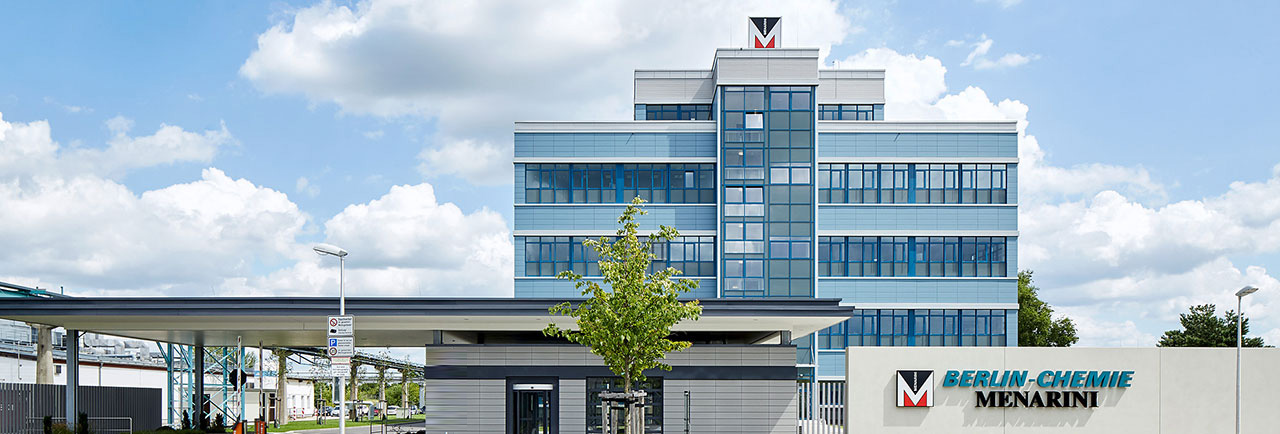

Headcount development from 2004-2021
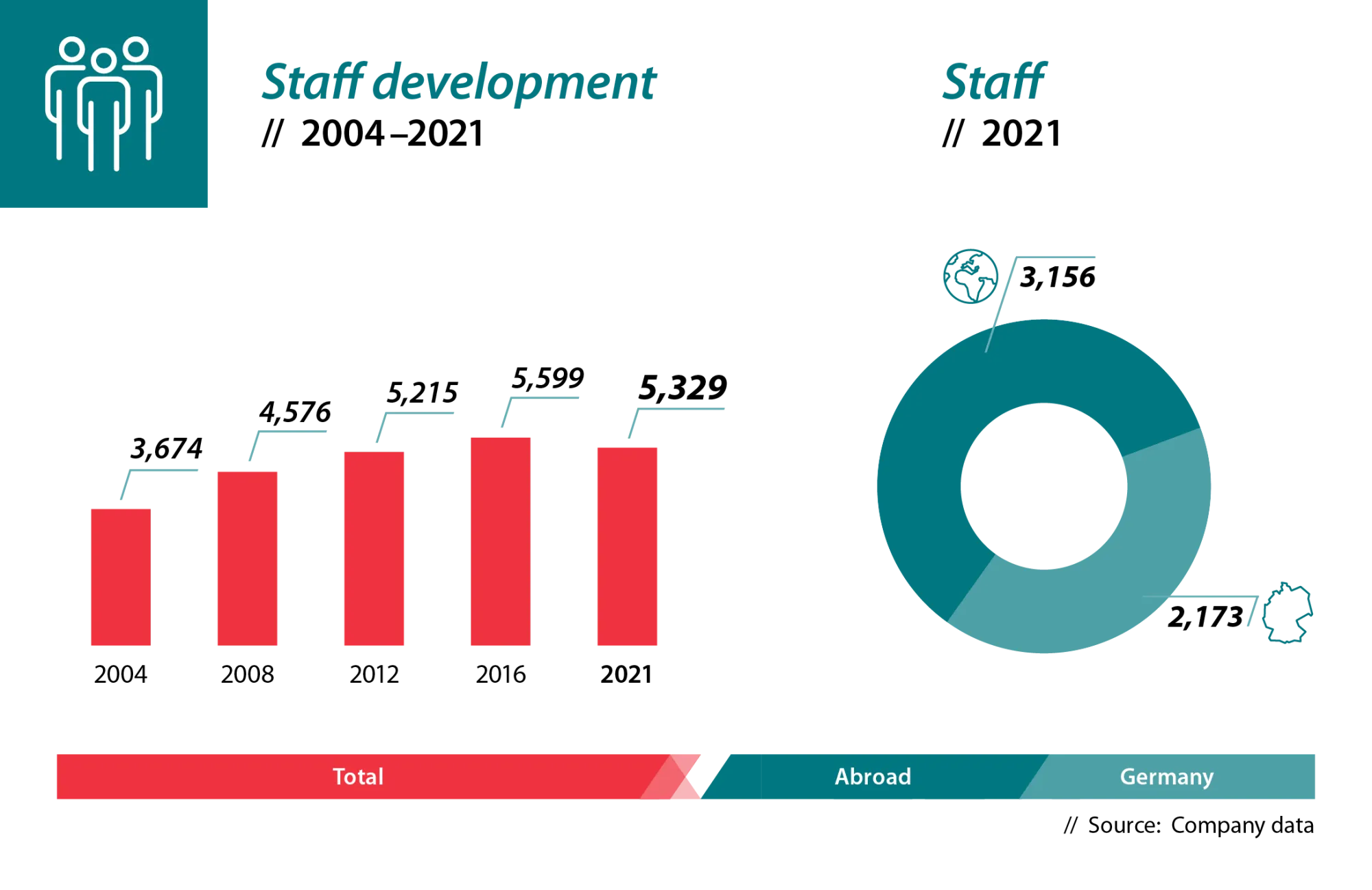

Our products
We develop and produce medicinal products, primarily for the treatment of diabetes, cardiovascular diseases, and cancer, as well as for the treatment of inflammatory diseases, pain and chronic lung diseases. These are supplemented by a series of preventative programmes that support clinical therapies and are intended to help people manage their own health so that medical intervention isn’t even necessary in the first place.

Our work
Diversity creates success – with staff from 72 different countries, we’re proof of that. Our multicultural community reflects the diversity of our city, Berlin. We fit in here. We work and conduct research that is international and innovative – in more than 30 countries in Central and Eastern Europe and more than 80 different collaborative research projects around the world. Diversity, an international spirit and our innovative portfolio of medicinal products and treatment options – these factors lead to our success.
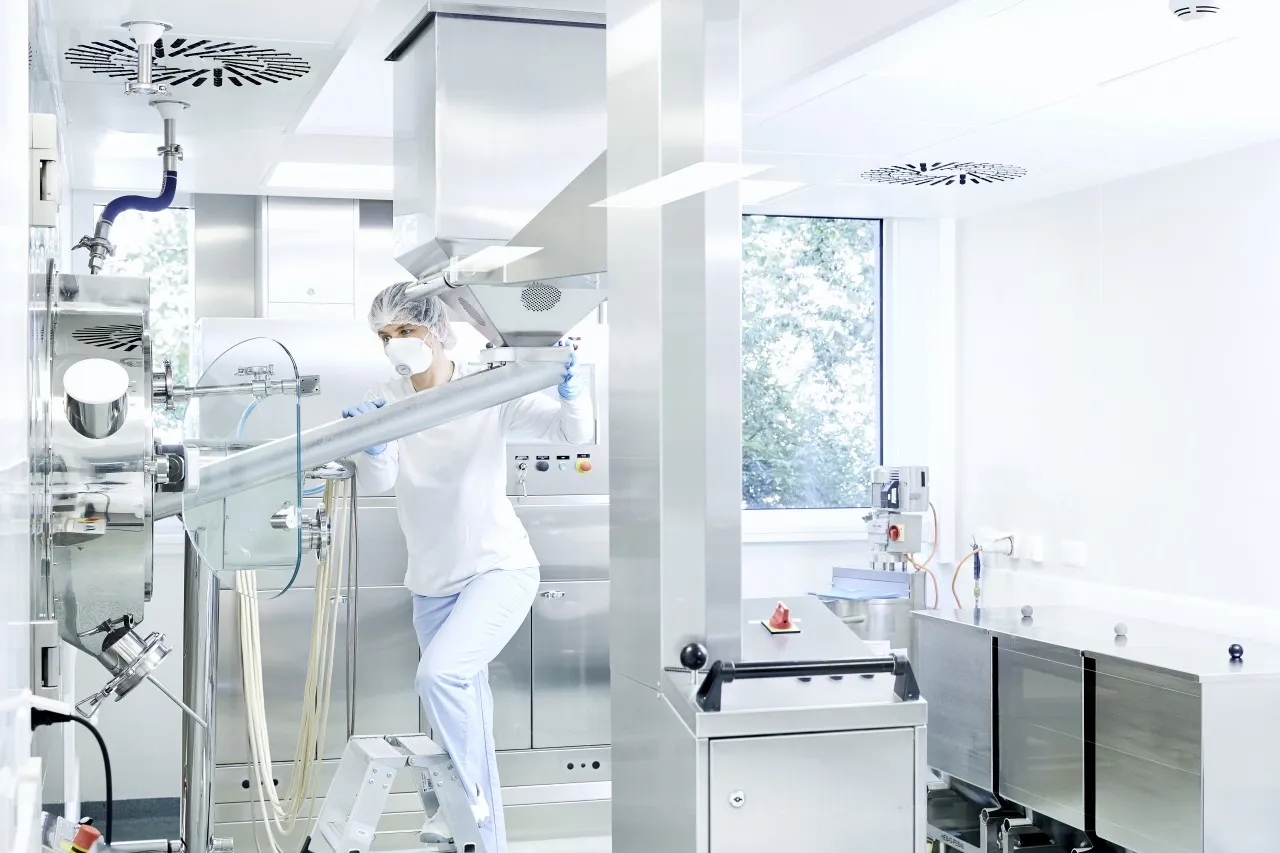

Total gross turnover development from 2004-2021 (million euro)
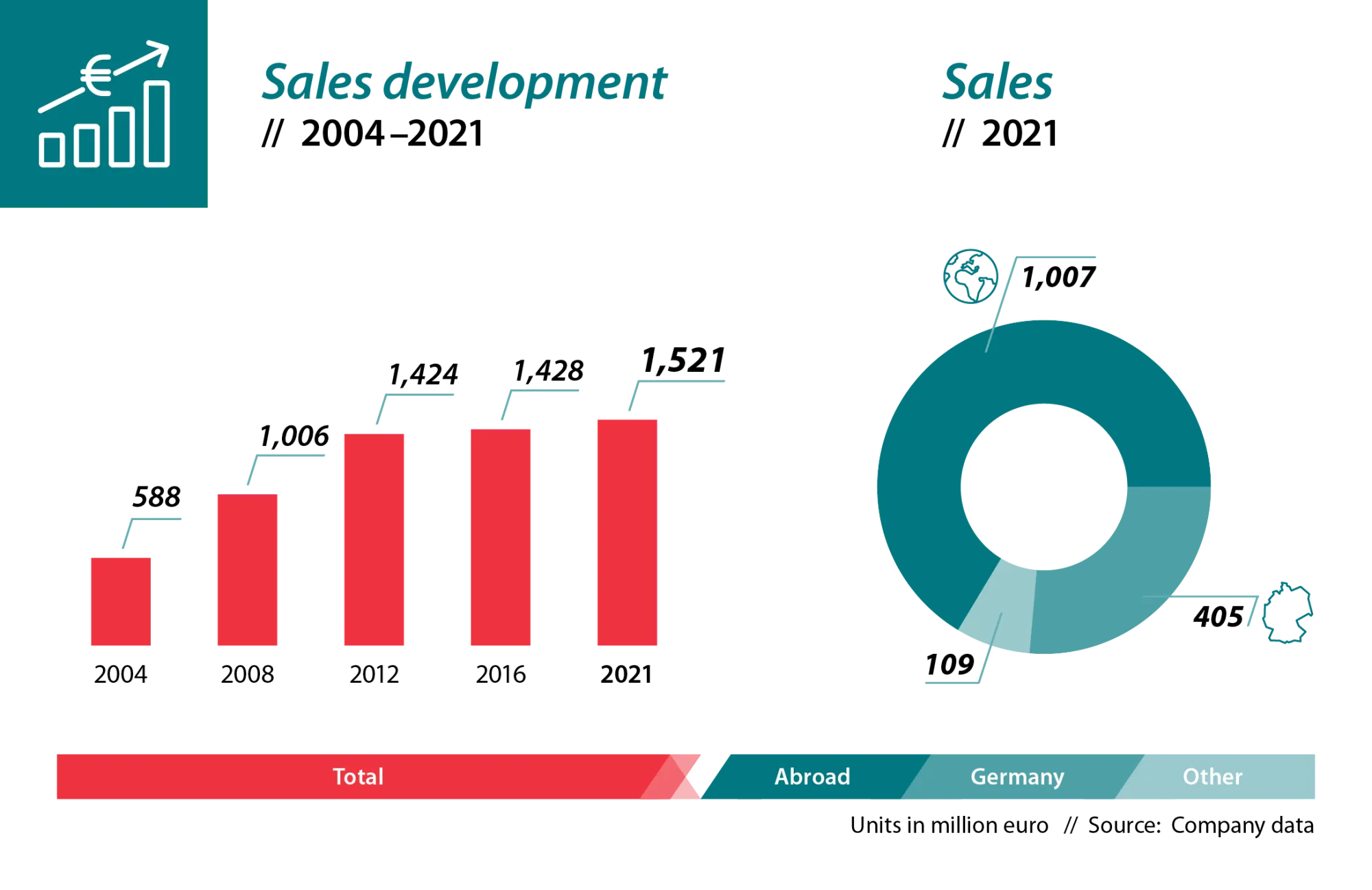
Our corporate culture
Team spirit is a top priority for us, because the only way to achieve success is by working together. At the same time, everyone is free to be who they are. Individuality and initiative are important to us and suit our flat organisational structure well.
We have a long-standing tradition of international collaboration and cultural diversity. And we pass on these maxims to subsequent generations by providing sound training and helping young professionals start out in their career.
Find out more about BERLIN-CHEMIE AG and Menarini GmbH on this website. If you’d like to know what we offer our employees beyond a job, we recommend starting with the pages on benefits and training.
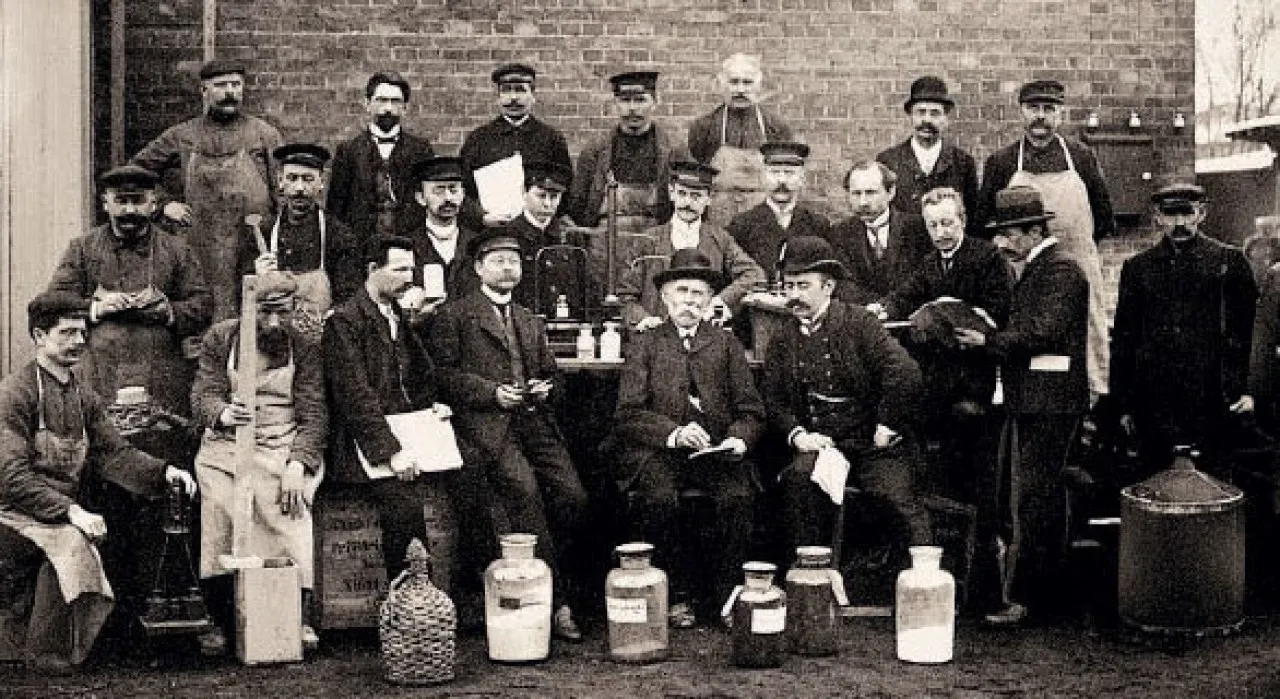

A long-standing company
Today, BERLIN-CHEMIE AG and Menarini GmbH are part of the Italian Menarini Group, a global owner-operated pharmaceutical group, headquartered in Florence. But our story starts as far back as 1890 – here in Berlin.
- The early years
In 1890, Johannes Kahlbaum founded a chemical and pharmaceutical company, Kahlbaum Laborpräparate [Kahlbaum Laboratory Compounds]. Its factory was located on the same plot of land in the Adlershof district of Berlin where BERLIN-CHEMIE has its headquarters today. At the turn of the century, Kahlbaum Laborpräparate had 250 employees producing more than 1,000 different laboratory chemicals and early medicines.
When the company was merged with Schering in 1927, it became one of the largest chemical/pharmaceutical companies in Germany and changed its name to Schering-Kahlbaum AG.
1937 brought a strategic refocusing, as the company was fully taken over by Schering AG: from this point onwards, production began to concentrate on chemical/technical products, but manufactured pharmaceuticals at an increasing rate as well.
After the end of the war, due to its location in the occupied zone, the company fell under Soviet control and later the GDR. It was partially dismantled, losing machinery, equipment, laboratory supplies and raw materials, but production continued under orders from the military administration. The majority of the products were confiscated by the occupying Soviet forces as reparations. In 1948, the company was nationalised and transformed into what was known during the GDR era as a volkseigener Betrieb (VEB) – a ‘people’s enterprise’ or publically owned company. After a series of renamings, the company became known as VEB BERLIN-CHEMIE in the mid-1950s.
Starting in the 1960s, VEB BERLIN-CHEMIE became one of the biggest pharmaceutical companies in the GDR and manufactured a wide variety of pharmaceutical and chemical products. In addition to penicillin, insulin and chloramphenicol, it produced agrochemicals and pesticides, and later silicates for residential construction and historic preservation, as well as raw materials for the textile and cosmetics industries. All of which was extremely successful and brought considerable profits.
- Post-German reunification
After the fall of the Berlin Wall, the Trust Agency (Treuhandanstalt: the government agency established by the GDR to privatise companies after reunification) converted the company to BERLIN-CHEMIE AG. This also led to a new orientation: BERLIN-CHEMIE now exclusively specialises in pharmaceutical products and adheres to international manufacturing standards.
In an international bidding process, Menarini – Italy’s largest pharmaceutical company – bought BERLIN-CHEMIE AG in 1992 and subsequently extensively expanded its marketing and sales activities. BERLIN-CHEMIE has been active on Germany’s national pharmaceuticals market since 1993, and has been achieving greater economic successes since 1994.
In 2013, some areas – in particular the internal services and research and development of innovative medicines – were reassigned to a newly founded associate company: A. Menarini Research & Business Service GmbH, or Menarini GmbH for short. Our company is therefore well-prepared for the future in terms of its organisation, too.
Our locations
More than half of our employees work at our over 30 locations in Central and Eastern Europe. With product portfolios specifically tailored to the relevant countries and markets, they serve the specific local needs and requirements – with outstanding results. BERLIN-CHEMIE AG is a market leader in the sector in Ukraine, Russia and the Baltic states and enjoys leading positions in all other markets.
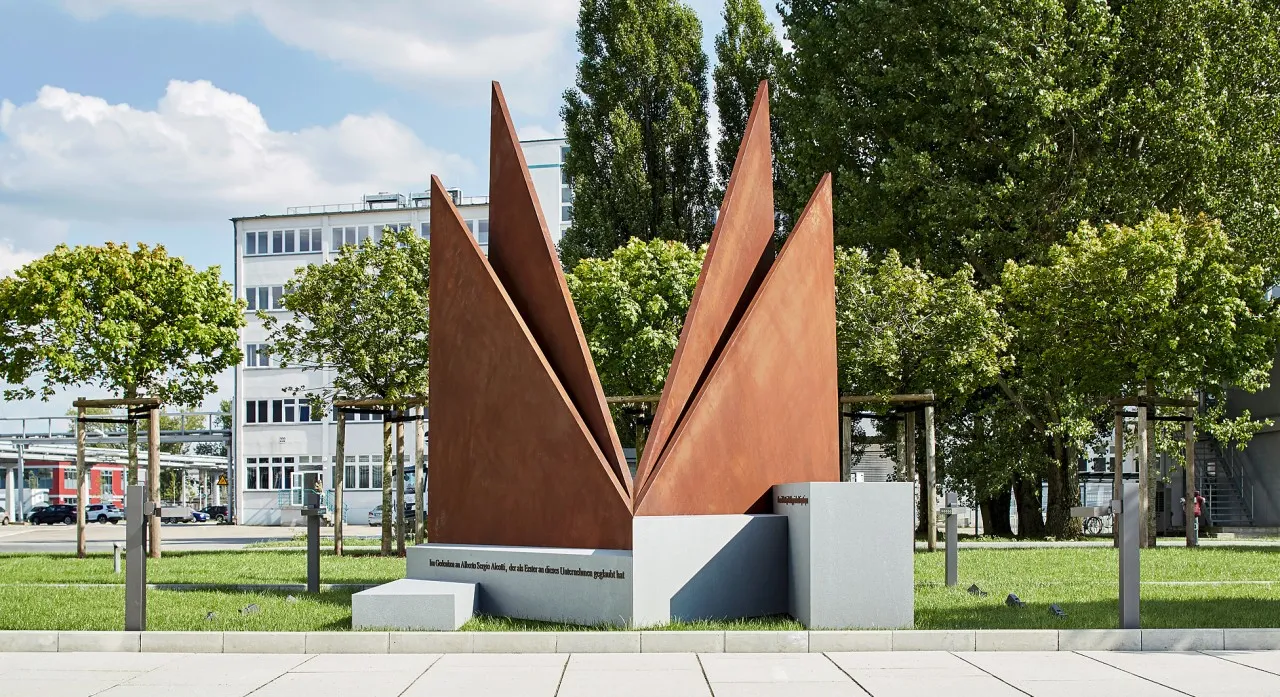

JOIN US
Keen and ready to take the first step
Click here for an overview of all the different jobs you can do at BERLIN-CHEMIE AG and Menarini GmbH. What spurs you on?

Hotline
Regardless of what career topics you have a question about: We are here for you and will be happy to help. Just give us a call!
You can reach us between 7:30 am and 5:30 pm from Monday to Thursday and between 7:30 am and 4:00 pm on Friday.


